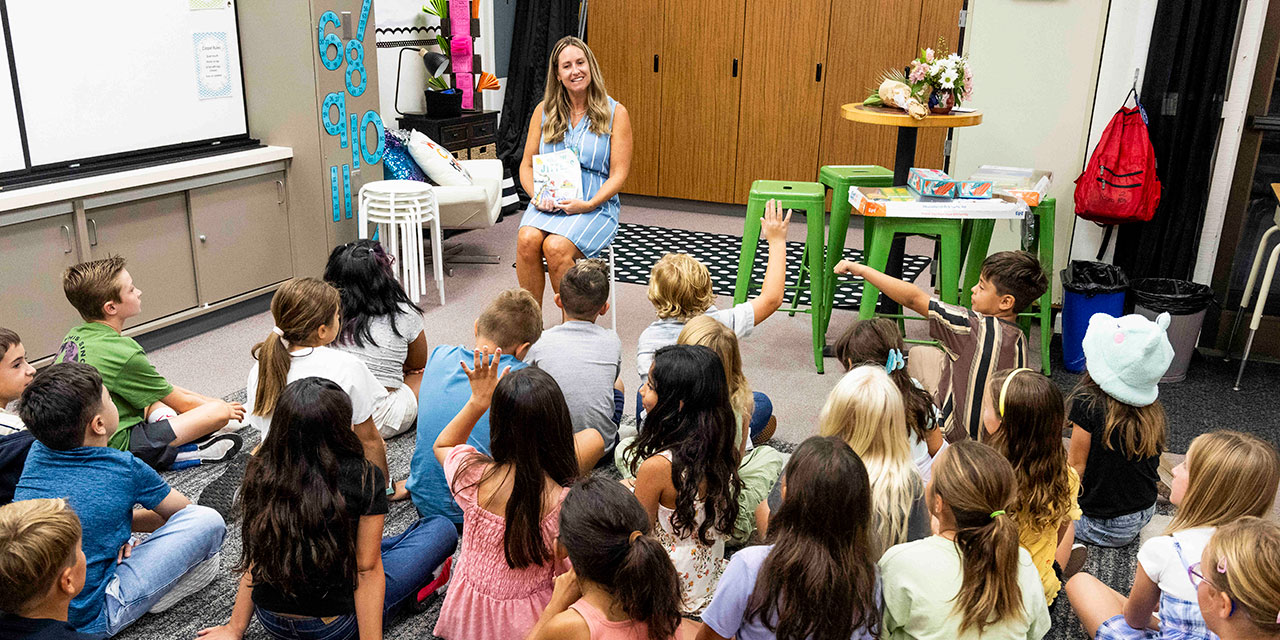
American public education is in trouble. Only 28 percent of eighth-grade students are proficient in math, just 30 percent meet standards in reading, and many high school graduates are functionally illiterate. But artificial intelligence, which has demonstrated educational benefits, could help reverse those trends—if opponents don’t spike the technology over “equity” concerns.
AI will soon deliver personalized tutoring services that could revolutionize teaching. Tools like Khan Academy’s AI-based, soon-to-be-free Khanmigo chatbot will make rigorous, Socratic-style instruction broadly available. These programs could help narrow the long-standing achievement gap between students who get academic support at home and those who don’t.
Finally, a reason to check your email.
Sign up for our free newsletter today.
But some opponents of AI in the classroom, including school boards and teachers’ unions, believe that the technology will worsen inequality. The National Education Association recently released a report warning that AI could heighten disparities, since “technology developers are overwhelmingly younger, White, cisgender, heterosexual, male, and people without disabilities.”
As with any new technology, some students’ skills will progress faster than others’. But this is no reason to ban the technology. To understand why, consider the debate over academic tracking—the practice of separating students into classes based on aptitude. While many school districts have abandoned formal tracking, some still use a “soft” version of it, offering competitive entry into honors and AP classes. Other districts have barred advanced placements entirely, regardless of students’ abilities, with disastrous results.
In 2014, for example, San Francisco Public Schools required all students to take the same math courses through their sophomore year in high school. A decade after that decision, many students—including high-achieving minority students—proved unprepared for STEM endeavors in college. The school reduced inequality, but by bringing everyone down to the same level, lowering the ceiling instead of raising the floor.
Bans on AI in the classroom in the name of equity would blunt students’ development and might also increase academic inequality. AI allows students of all backgrounds and aptitudes to receive supplemental, individualized instruction. Its adoption may narrow the gaps associated with race, family income, and IQ, as students get personalized support that would otherwise be impossible with rising class sizes and teacher burnout.
The future of American public education depends on recognizing a simple truth: students learn at different speeds, even with the same tools. Schools must allow advanced learners to excel, while giving extra support to those who fall behind. AI can help—but only if schools put outcomes ahead of ideology.
Photo by Paul Bersebach/MediaNews Group/Orange County Register via Getty Images
City Journal is a publication of the Manhattan Institute for Policy Research (MI), a leading free-market think tank. Are you interested in supporting the magazine? As a 501(c)(3) nonprofit, donations in support of MI and City Journal are fully tax-deductible as provided by law (EIN #13-2912529).
Source link


















